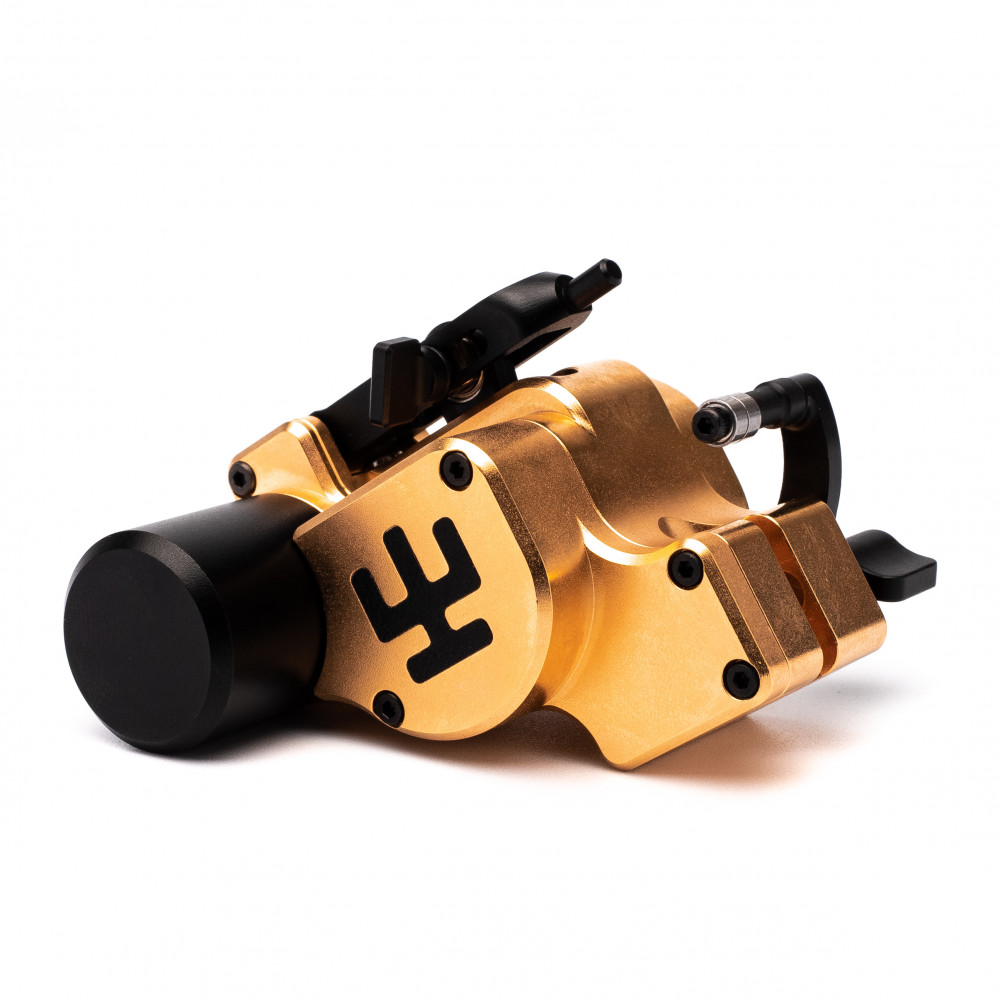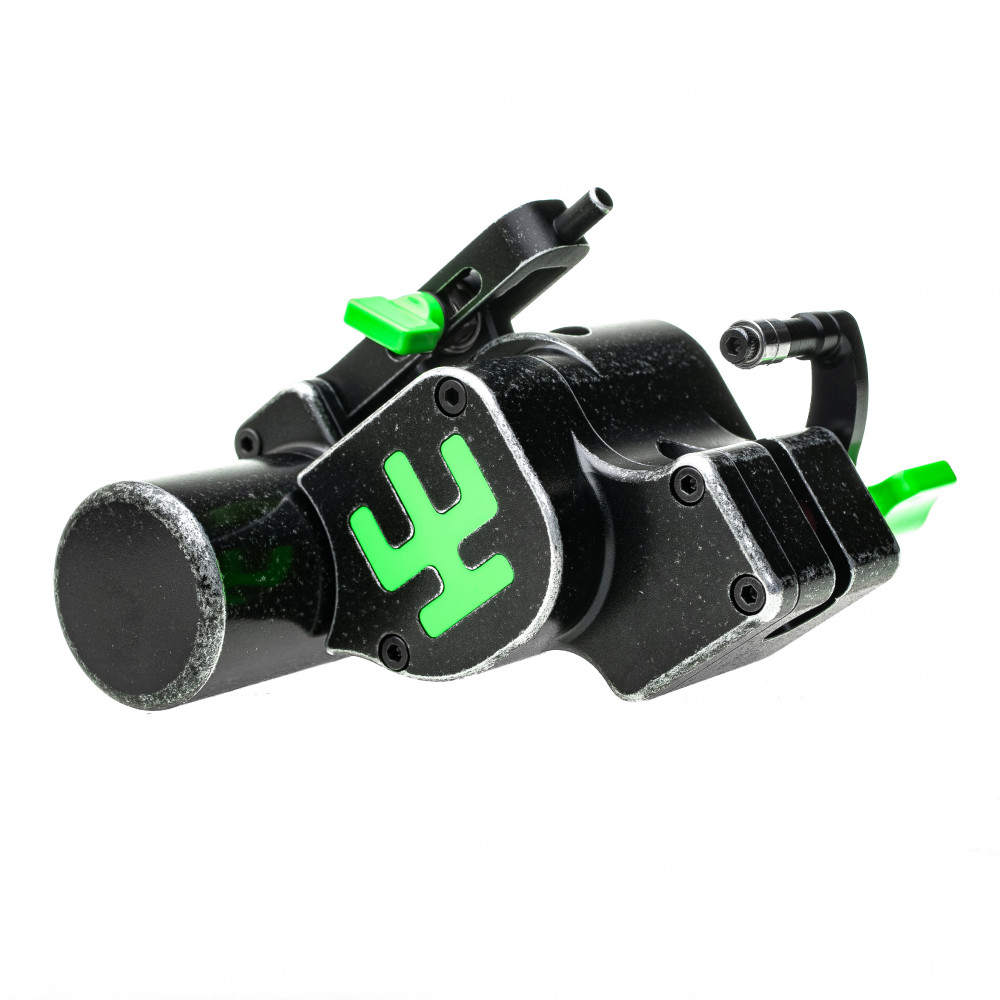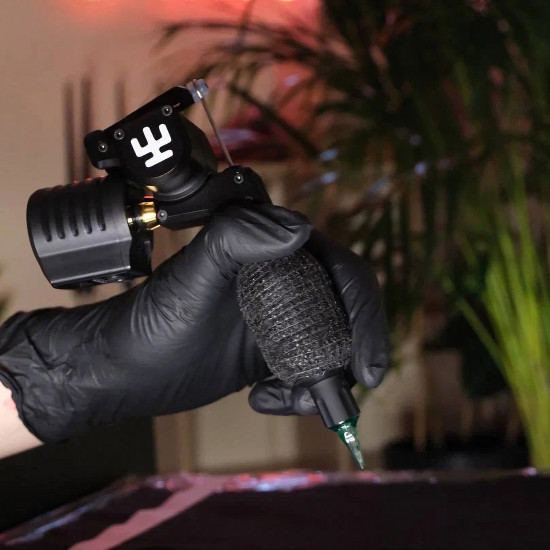Tattooing is both an art and a craft, and like any craft, the equipment are important. No matter how experienced you are or how new you are to the field, knowing how tattoo machines function is important for picking the correct tools and become good at your craft. The way a machine sends electricity, moves the needle, and reacts to your hand has a direct effect on how well it works on the skin.
Tattoo machines have changed a lot in the last ten years. Even if ancient coil machines are widely respected, new technology has given artists more tools to work with. For example, VladBlad’s Avenger Series has hybrid designs that let you switch between different stroke profiles in seconds. This means that one device may replace a whole range of machines.
This guide will help you understand how each system works, what makes them different, and how to pick the one that works best for your style, whether you want the raw accuracy of a coil, the quiet reliability of a rotary, or the flexibility of a hybrid.

Contents
The Main Idea Behind All Tattoo Machines
At its most basic level, every tattoo machine does the same thing: it moves a collection of needles up and down at a controlled speed and force to put pigment into the dermis. The artist’s touch must be able to make this movement exact, repetitive, and sensitive. The mechanism changes electrical energy into mechanical motion, no matter what type it is, whether it’s a coil, a rotary, or a hybrid.
Here’s what all tattoo machines have in common:
- A power source that delivers electricity, either via a wired connection or built-in battery
- A motor or electromagnetic circuit that generates movement
- A drive mechanism that converts electrical input into linear motion
- A needle assembly that deposits ink into the skin with every stroke
- A frame or body that holds all components in place and ensures alignment
The differences—and benefits—between the machines start to show themselves in how they individually do this process. Each system has its own personality, characteristics, and best uses. For example, a coil makes a magnetic snap, whereas a rotary motor makes a smooth spin.
Let’s break down how each type works.
Coil Machines: Tradition, Power, and Tactile Feedback
The coil tattoo machine is the most important tool for modern tattooing. These devices work on electromagnetic principles and are easy to spot because of their unique buzzing sound and visible copper coils. When electricity travels through the coils, they generate a magnetic field that pulls down an armature bar. This, in turn, pushes the needle down. Then, a spring pushes the bar back to where it was before, and the cycle starts over again.
Read also Caring for Your Tiny Tattoo
This rapid mechanical movement gives coil machines their signature vibration and responsiveness — characteristics that many experienced artists rely on for lining and color packing.
Key Components of a Coil Machine:
- Coils: Usually two, wrapped in copper wire to generate magnetic force
- Armature bar: A movable steel bar connected to the needle
- Front and rear springs: Control the speed and force of movement
- Contact screw: Regulates the timing and flow of current
- Frame: Holds everything in alignment
Advantages of Coil Machines:
- Strong, adjustable hit — ideal for bold lines and solid fills
- Highly customizable through tuning (spring tension, gap, voltage)
- Clear auditory and tactile feedback for real-time control
Limitations:
- Heavier and more complex to maintain
- Requires manual tuning for different techniques
- Not ideal for long sessions due to vibration and hand fatigue
When an artist knows how to use them, coil machines provide them the most control. Their ability to be adjusted by hand is both a strength and a learning curve, which makes them a good choice for anyone who like mechanical precision and want full control over their setup.
Rotary Machines: Simplicity, Smoothness, and Low Maintenance
Rotary tattoo machines work in a completely different way. They don’t employ magnetic pulses and springs; instead, they use a small electric motor to move the needle in a smooth, circular motion. This motor spins a cam or crank system that changes rotational energy into linear motion, moving the needle up and down in a constant rhythm.
Rotary machines are usually quieter, lighter, and need less maintenance than coil machines since they are simpler. They vibrate less and are often preferred because they are more comfortable and easy to use, especially for long periods of time.
Core Features of Rotary Machines:
- Electric motor: The heart of the system, delivering continuous motion
- Cam or crank mechanism: Converts motor rotation into needle movement
- Lightweight frame: Often compact and ergonomic
- Consistent performance: Minimal fluctuation once voltage is set
Advantages of Rotary Machines:
- Quiet and smooth operation
- Minimal setup and tuning required
- Versatile across lining, shading, and color work
- Lower vibration reduces hand fatigue
Limitations:
- Less tactile feedback compared to coils
- Stroke and hit are typically fixed unless the machine supports adjustment
- May lack the aggressive punch preferred for certain bold styles
Rotary machines are ideal for artists who prioritize simplicity, consistency, and all-around flexibility. For many, they’re the go-to option for both black & gray shading and fine line work — especially when working in sensitive areas or over long sessions.
Hybrid Machines: Adaptability Without Compromise

Hybrid tattoo machines are a mix of coil and rotary methods. Hybrids are meant to give you the best of both worlds. They usually use a rotary motor as the power source, but they also have features that let artists change the stroke length, hit intensity, or performance profile without having to take the machine apart.
These machines are made to be useful in many ways. A well-designed hybrid can change to fit your demands in seconds, whether you’re lining, shading, or color packing. You don’t have to swap machines or tune springs; you just turn a dial, alter a cam, or turn on a preset.
Avenger 3 Pro Cyber Scars – Neon Green is one of the most advanced examples of this new technology. It has six customizable stroke settings, from 3.2 mm for tiny lines to 5.5 mm for strong color saturation. You may change them quickly with the machine’s built-in quick-turn mechanism. It has a wireless power supply, a light body, and a bold look. It’s made for artists who want to be in charge without having to set it up.
What Makes Hybrids Stand Out:
- Multi-stroke capability: Adapt instantly to any technique
- Wireless options: Total freedom of movement
- Built-in power regulation: Consistent output across modes
- Reduced need for multiple machines: Ideal for travel or mobile setups
Advantages of Hybrid Machines:
- One machine replaces many — no need to carry separate liners and shaders
- Fast transitions between techniques
- Combines precision with smooth motor performance
- Available in both wired and wireless formats
Limitations:
- Typically more expensive than standard coil or rotary machines
- May include proprietary mechanisms that require specific parts or batteries
- Some artists may prefer the tactile nuance of simpler machines
Hybrids are a reflection of where tattoo technology is headed — empowering artists with flexibility without sacrificing quality or control. Whether you’re traveling between conventions or working across multiple styles in a single session, hybrid machines deliver speed, reliability, and creative freedom.
Coil vs Rotary vs Hybrid: Choosing the Right Tool for the Job
Each type of tattoo machine brings distinct advantages to the table, and the best choice ultimately depends on your technique, workflow, and personal preference. Understanding how they compare can help you build a setup that works with you — not against you.
Here’s a breakdown of key differences:
| Feature | Coil Machine | Rotary Machine | Hybrid Machine |
| Power Source | Electromagnetic coils | Electric motor | Electric motor + adjustable mechanics |
| Vibration | High | Low | Low to moderate |
| Noise | Loud, buzzing | Quiet | Quiet |
| Tuning Required | Manual (springs, contact) | Minimal | Quick-adjust via dial or system |
| Versatility | Style-specific | Moderate | Very high |
| Setup Time | Moderate to long | Quick | Instant changes |
| User Profile | Experienced, precise | All levels | Artists needing flexibility |
Coil machines are still the best choice for strong packing and bold lining. Rotary machines are easy to use and reliable for beautiful shading and linework. Artists who want to flip between styles without having to change gear in the middle of a session can use hybrid machines like those in the Avenger Series.
If you’re new to anything, a rotary or hybrid system might let you focus more on how to do it and less on how to set it up. For artists who have perfected their technique and want to be in charge of everything, coils nevertheless provide them a tactile edge.

There’s no universal best — only what works best for you.
Frequently Asked Questions
Which tattoo machine type is best for beginners?
Rotary and hybrid machines are typically easier for beginners due to their low maintenance and smooth operation. They don’t require manual tuning, making it easier to focus on technique. A hybrid like the Avenger 3 Pro is especially useful if you want to explore different styles without changing machines.
Can one machine do everything?
Yes — if it’s built for it. Hybrid machines are specifically designed for multi-purpose use. With adjustable stroke settings and powerful motors, a hybrid machine like those in the Avenger Series can replace multiple coil or rotary setups and handle lining, shading, and color packing efficiently.
Are coil machines outdated?
Not at all. While they require more manual tuning and experience, coil machines are still favored by many professionals for their power and tactile feedback. They remain unmatched for bold lines and heavy saturation when properly tuned.
What’s the benefit of wireless machines?
Wireless machines provide greater freedom of movement, reduce setup time, and eliminate the clutter of cords and power supplies. They’re especially valuable for traveling artists or those working in dynamic environments. The Avenger 3 Pro Cyber Scars is a strong example of how wireless machines are evolving to meet professional standards.
Do I need different machines for lining and shading?
Traditionally, yes — especially with coil machines, since each one is tuned for a specific purpose. However, modern hybrids allow you to switch modes quickly. With the Avenger Series, for example, you can rotate between six different stroke profiles to suit different techniques on the fly.
Conclusion: Understanding Your Tools = Elevating Your Work
Knowing how tattoo machines work isn’t just technical knowledge; it’s also a way to boost your creativity. If you know how your equipment works, you can make better decisions, adapt to new styles, and fix problems more quickly, whether you’re using the raw punch of a coil, the smooth glide of a rotary, or the multi-mode versatility of a hybrid.
Modern machines have made more things feasible. With the Avenger Series, painters may change the length of their strokes in seconds. The Avenger 3 Pro Cyber Scars – Neon Green is a new kind of tool that combines power, wireless flexibility, and design into one professional-grade instrument.
No matter what your style is, the correct machine should help you do your task, not get in the way. The more you know about how your tool works, the more it feels like a part of your hand. That’s when real control and art begin.








